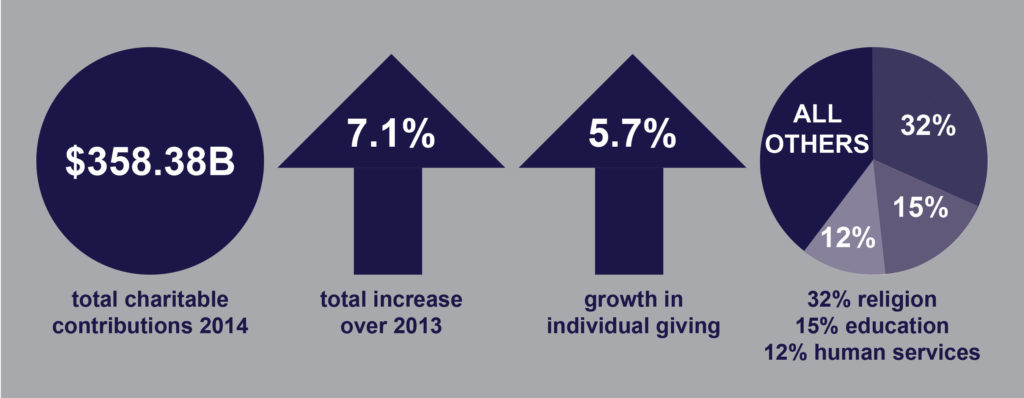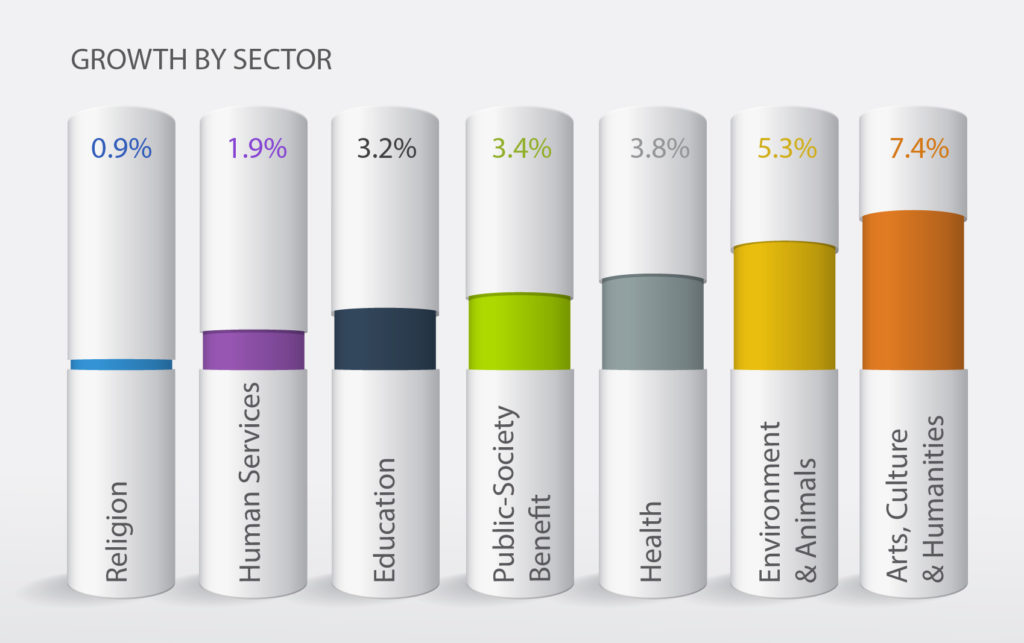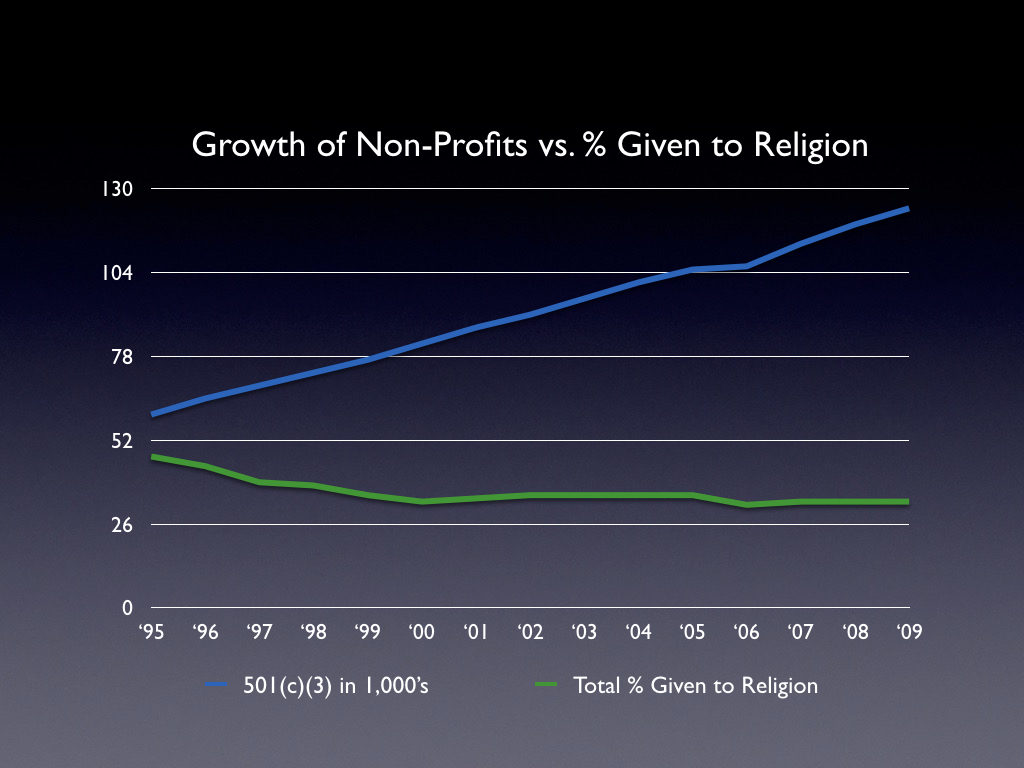Charitable Giving to Churches is on the Rise… Or Is It?
LeadershipDid you read the most recent charitable giving report from Giving USA released in late June? It’s on the top of that neatly-piled stack of books on your desk to read this summer, right? Maybe not? In that case, allow me to summarize for you. There’s a point worth making here that directly affects the church.
There is some good news in the report, but also a resounding alarm I’m guessing 99% of you are missing. (If you’re one of those readers who doesn’t want all the stats I’m about to share, but want to get right to that alarm I referenced, scroll down to “The Resounding Alarm” heading below – the most applicable part of this post!)
THE GOOD NEWS
First, the good news, taken from Giving USA Highlights – 2015 Press Release:

- Total charitable contributions to all causes in 2014 = $358.38 billion. That’s an increase of 7.1% over 2013 (5.4% when adjusted for inflation).
- Giving by individuals grew by 5.7%.
- Giving to religious causes (including churches) is the largest recipient category, receiving 32% of all charitable giving. (Education and Human Services are the next highest categories, receiving 15% and 12% respectively.)
- Giving to religion reached a record high last year when adjusted for inflation.
- The charitable giving forecast for 2015 indicates the year will finish up 5.6% over 2014, with a total of $482.27 billion. (Mid-year report from Atlas of Giving)
THE NOT-SO-GOOD NEWS
And now some not-so-good news, taken from the same report as above:
The mid-year report from Atlas of Giving refers to church giving as a “lagging sector.” They state:
“Church membership continues to decline, which is very significant – especially since most of their giving comes from individual donors.”
Why, if giving to religious causes is up, would they cite the sector as “lagging” you ask? Consider these facts, again from the Giving USA report:
- Religion, at $114.90 billion in 2014, saw an increase of 2.5% in current dollars, a modest 0.9% when adjusted for inflation.
- Compare that inflation-adjusted increase with other sectors:
- Religion – 0.9% increase
- Education – 3.2% increase
- Human Services – 1.9% increase
- Health – 3.8% increase
- Arts/Culture/Humanities – 7.4% increase
- Environment/Animals – 5.3% increase
- Public-Society Benefit – 3.4% increase
Let’s take a look at these numbers visually:

You are reading that correctly. While religious causes had a slight increase, the increase was smaller than every other sector, with the exceptions of Foundations (0.1% increase) and International Affairs (3.6% decrease).
THE RESOUNDING ALARM
Now for that alarm I mentioned in the opening. It’s somewhat lost, about ⅔ of the way down the Giving USA Press Release. They state:
“While the overall growth is indicative of robust philanthropy to a wide spectrum of nonprofits and, thus, of all boats rising with the tide, we would be remiss to gloss over what is happening with giving to religion. Although 2014 donations reached a new high of $114.90 billion, and, as always, accounted for the largest percentage of donations, the fact is, this category is continuing its 30-year dramatic downward slide as a share of total giving. In fact, it has dropped from 53 percent of all donations in 1987 to 32 percent of the total in 2014.” (emphasis added)
Church giving is continuing its 30-year dramatic downward slide as a share of total giving. Click To Tweet
I noted in a 2009 blog post that similar stats at that time reflected religion receiving 35% of the total in 2008. I thought it was bad then, but it’s continues to decline!
To highlight the importance of this statistic, I created this graph (updated to reflect this most recent data) and shared it in a presentation to a chapter of the National Association of Church Business Administrators (NACBA), now known as The Church Network (TCN).

One of the likely causes for this decline can be found in the growth of the number of non-profit organizations in just the last 20 years, from approximately 650,000 in 1995, to an estimated 1.5 million in 2015 (source: National Center for Charitable Statistics). Your people have many more options to consider for their charitable dollar. Combine that with decline in church membership, and the lower frequency of regular church attendance, and the causes for decline mount.
WHAT CAN THE CHURCH DO?
What should you be doing to affect change within your church? Well… there’s not just one answer to that question. But here are several ideas to help you almost immediately:
- Don’t be deterred or defeated!
- Preach the Gospel.
- State your church’s vision continually.
- Be compelling.
- Connect the dots between generosity and life change.
- Teach and preach generosity and stewardship, and do it regularly.
- Offer Financial Peace University or similar classes – your people are in debt and think they can’t afford to give.
- Talk about money. Don’t avoid it, but make the conversation a familiar and more comfortable one to have.
- Encourage generosity outside the offering moment.
- Make your church culture a culture of generosity.
My website contains posts written since 2009, most on this very topic, and several that are linked in the list above. You’ll find lots of answers to that question within.
And if you’ve not yet downloaded my newest e-book, Leveraging Technology to Accelerate Giving, you’re missing out on something really important in the culture of church giving. Get your free copy today!

